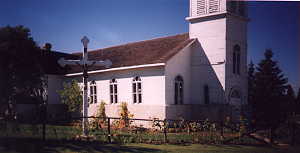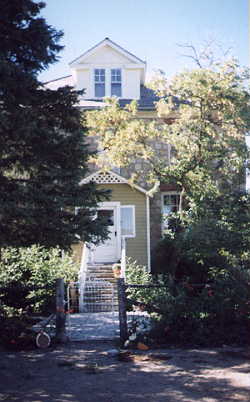|
|
|
The Beginnings of St. Joseph's
The settlement of St. Joseph's Colony (Josephstal) near Balgone, Saskatchewan, had been established some years previously (1886). Johann Kuntz, one of the settlers, drove the newcomers south to the place where 14 colony is presently located. In the meantime, Adam Matz and Karl Bengert went north as far as Langenburg. After they returned from their inspection tour, they purchased provisions and the most necessary household utensils and implements. The Canadian Pacific Railway put two cars at their disposal, and on the 6 June 1890, they arrived at Balgonie.
St. Joseph's Colony
Now known just as St. Joseph's.They were met at the station by the people from Josephstal; the day was the Feast of Corpus Christi, and Bishop Tache was administering confirmation. The people in St. Joseph's had already built a small sod church (1887) on Junker's homestead south of the present colony. Some of the newcomers had not been confirmed, and so took advantage on this occasion.
The next day eight of them went to Regina to apply for homesteads. There they bought a team of oxen and a wagon, as well as necessary implements. Then they drove a bit north into the bush and got a load of poplar trunks for their buildings. Returning south to the north-east corner of section 14, they pitched the tents, which had been provided for them by the Immigration Department, near Many Bone Creek.
St. Joseph's Church
Four families lived in each tent for a period of 3 weeks. One can imagine how these people adapted to the Indian way of life. The furniture was simplicity itself The wash bucket served the most varied purposes. Usually it was the kitchen cupboard, but at times it served as the bake pan and finally, in an emergency it served as an umbrella.
There was no need for a table or bench; a two foot deep trench in the form of a rectangle served this purpose. The center was the table and side of the trench served as the bench. This arrangement worked just fine and to everyone's satisfaction, until suddenly a very heavy rainstorm struck, and the surface runoff formed little streams. The water ran through the bottom of the tents and filled the trench in minutes, so that the table became an island. The frightened women scampered about holding their bed clothing above their heads in an attempt to save it from the flood. In the meantime, the men hastily dug a ditch above the tents in order to deflect the stream of water. Oh what fun it is to be a pioneer!
The most pressing need, in the opinion of the new settlers, was to provide a good warm and safe shelter. The following pairs of families each built a house: Michael Scherger and Anton Schmidt, Sebastian Schropp and George Bust, Peter and Raymund Dielschneider, Johannes Eli and Johannes Bust. During the same fall (1890), seven families arrived from the colony of Klosterdorf. The colony of Klosterdorf is also in the province of Cherson, on the right bank of the Dnieper.
The cross outside of the Church

The migrants had left on the 7 September and arrived in Winnipeg on the 8 October 1890. They remained there for 16 days while some of the senior members went on to find suitable land upon which to settle. On the 25 October they arrived in Regina.
Rectory at St. Joseph's
First Settlers:
- Alexander Ehmann and his wife Susanna Rokaschevski (whose father's name was Jakob) and 2 children, Robert 6 and Gustave 3.
- Johann Mayer and his wife Margareta Sperling and 4 children, Michael 17, Marianna 13, Kathanina 11 and Josephina 9.
- Johann Fahlmann and his wife Marianna Rokaschevskie (wholse father's name was Joseph) and 4 children, Chnistoph 18, Daniel 16, Paul 10, and Joseph 3.
These three families spent the winter with the first settlers. The rest rented a house in Pilot Butte and spent the winter there. They were:
- Jacob Mayer and his wife Margareta Ehmann and 4 children, Adam 10, Katharina 8, Joseph 6, and Maria 2 years old.
- Christina Mayer and his wife Elizabeth Rieberger and 2 children, Maria 4 and Alexander 2.
- Johann Reinlander and his wife Susanna Ehmann and 2 children, Mathelda and Katharina.
- Johann Mayer and his wife Dorothea Keller.
- Wilhelm Kraus and his wife Elizabeth Dornhauser and 6 children, Peter 20, Michael 18, Andreas 16, Maria 14, Rosalia 12, Jakob 9 years old.
Meanwhile, the Canadian winter had set in and the new settlers amused themselves by "maistuben" (visiting) with the earlier settlers, but only at the cost of a frozen nose.
Historical Sketch of St. Peter's Parish and the Founding of the Colonies of Rastadt, Katherinental and Speyer*
By Reverend Father H. Metzger
Translated By
A. Becker and Sister Bernadine Kletzel
Back